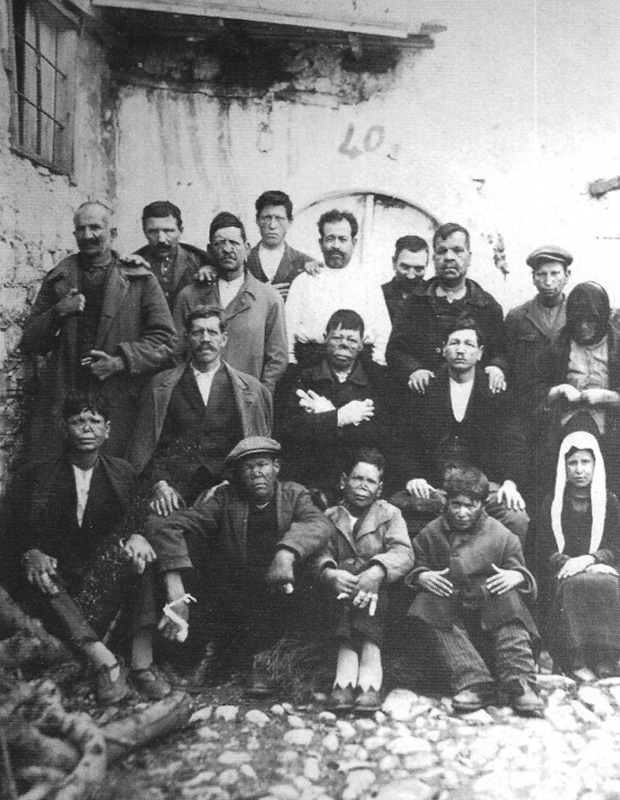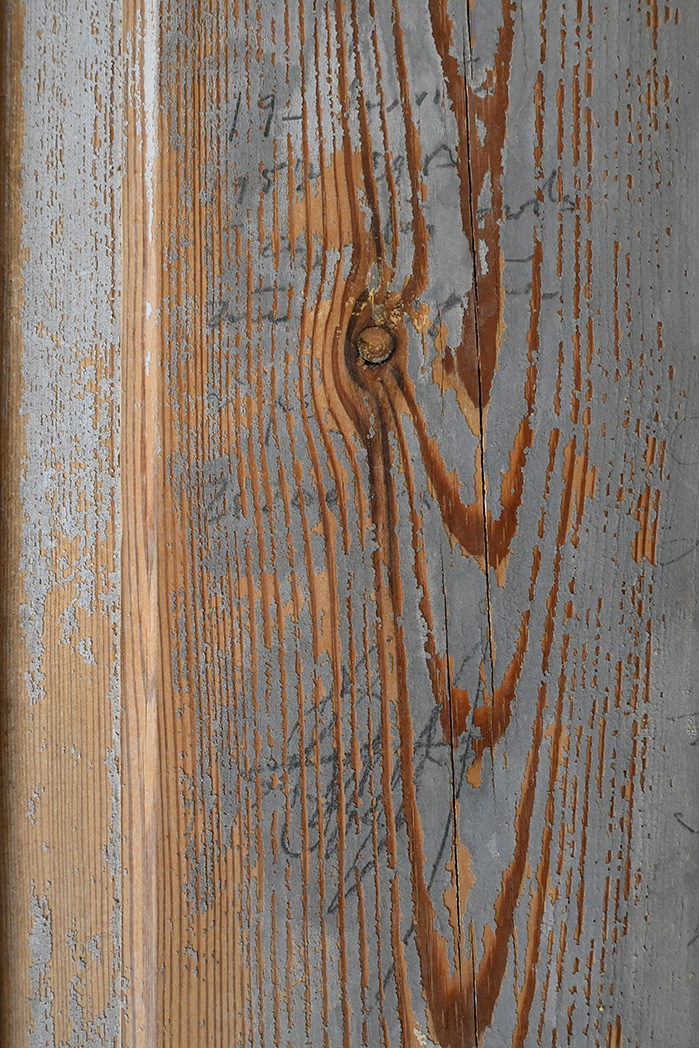Modern times
The period of the Leper Colony (1903-1957)
Leprosy is a chronic infectious disease affecting the nervous system and primarily the skin, which causes, among other things, deformities and loss of fingers and nose while gradually leading to blindness. It is also known as Hansen's disease, named after the Norwegian physician Gerhard Armauer Hansen, who discovered the leprosy mycobacterium in 1873. It is considered a contagious disease, although the exact transmission conditions are not fully understood -even today.
Leprosy is particularly widespread in Crete during the 18th and 19th centuries. During the Ottoman era, lepers lived outside cities in areas called "meskenies," a Turkish word miskin meaning leper. The Cretan State (1898-1913) aiming to address this situation within the modern framework of the time, which dictates the isolation of the patients from the "healthy" population, decides in 1903, to mandatory isolation of all the leprosy patients of Crete to the island of Spinalonga. This choice is dictated by the presence of abandoned Ottoman houses but also by the intention to expel the Muslim population that has remained on the island. The first lepers are settled on Spinalonga in 1904. Until 1913, the situation and the conditions regarding food, housing, and medical care are significantly degraded. These extremely adverse conditions lead to many escape attempts by patients from the island and suicide attempts, especially by newcomers.
After the unification of Crete with Greece in 1913, leprosy patients from other parts of Greece are also sent to the leper hospital in Spinalonga. In 1925, Dr. Emmanouil Grammatikakis is appointed as the director of the Leper Hospital, while in 1927, the French Nobel-awarded physician Charles Nicolle visits the Hospital. Upon his return to Paris, he sent 10,000 doses of the anti-leprosy drug Hygranol. In 1928, more systematic efforts begin to improve the living conditions on the island. For example, a mosque in Spinalonga is being repaired and adapted to house a medical unit and, pharmacy, the Hospital. However, it is essentially used more as a reception place for the patients and a warehouse of material. In the rest of Greece, establishing the anti-Leprosy Station in Agia Varvara in 1929 is crucial for dealing with the disease, an institution in which various therapeutic methods are applied in contrast to Spinalonga.
Conditions significantly improve only when the patients establish the "Brotherhood of the Sick of Spinalonga, Agios Panteleimon". Epaminondas Remoundakis, a law student at the University of Athens who arrives on the island as a patient in 1936, played a crucial role in the patients' struggle. Together with other confined young people with academic knowledge and progressive ideas, they organize the Spinalonga community significantly. Through the personal work of the patients and with the help of local craftsmen, the settlement is cleaned, houses are whitewashed, hygiene measures are taken, and the ruins are rearranged. At the same time, communal recreation areas are created, such as the society's offices, which house a small library and a radio. Also, for the first time, the Greek state is sending hospital staff to Spinalonga and large quantities of medical supplies. During 1937-1939, dormitories for the patients are built on Spinalonga, while during 1938-1939, the island's perimeter road was opened.
Inscription on the terrace of the eastern side of the road commemorating the completion of the opening of the perimeter road in 1939, after the actions of the "Brotherhood of the Sick" and its president Epaminondas Remoundakis. ©Ephorate of Antiquities of Lasithi
The efforts to improve the daily lives of the patients on Spinalonga are interrupted by World War II and the Italian and German occupation of Crete. The patients' living conditions on the island during this period are challenging. Many die from malnutrition, while those who are trying to find food by swimming to the opposite shores of Plaka are executed by the Germans.
In the late 1940s and early 1950s, changes are made to the infrastructure, but not in the level of medical care. After efforts by the patients and the administration of the Leprosarium, two ambulances arrive for the transfer of patients to hospitals in the region, as well as a generator for electricity. Additionally, the patients' request to repair small boats for fishing is accepted.
Although the discovery of the treatment for leprosy occurred in 1941 with the application of the compound promin, in Spinalonga, the new pharmaceutical substances were administered for the first time in 1948, with impressive results in the healing of patients. Short-term discharge permits are thus issued for the first time, ending the regime of absolute isolation of the confined individuals. Moreover, during the reevaluation of specific patients, it is found that they had fallen victim to misdiagnosis and had been confined to the island without reason.
From the mid-1952, the Greek government begins promoting the abolition of all leper hospitals and the establishment of a central treatment facility in Athens. However, the delayed implementation of these measures results in vigorous reactions from the patients, who begin a hunger strike in 1953. In 1955, a legislative decree was passed that terminated the regime of confinement and isolation of disease carriers. Nonetheless, the leper hospital on Spinalonga continues to operate as it is vital for the economic survival of the entire neighbouring province of Merambello. Finally, planning the patients' departure from the island begins in 1956. In 1957, the last, approximately thirty, patients are transferred to the Anti-Leprosy Station of the Hospital for Infectious Diseases, Agia Varvara, in Athens, and the Leper Hospital of Spinalonga closes definitively.






